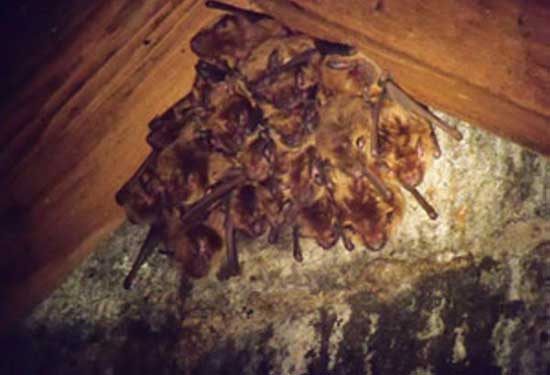Mammalian Species
Bats in MI are the second most numerous mammalian species known to man and are the only mammals capable of true flight. They make up almost one-quarter of all mammalian species in the world, Another way to look at this is that one out of every five mammalian species belongs to bats. All bats have developed eyesight and can see quite well. However, visibility in the dark is always a challenge so most bats use echolocation (sound echoes that bounce off of objects) to find their prey and navigate. Echolocation is only effective for very short distances (several meters from the bat) and contributes to the erratic flight of these mammals. These wildlife critters are the most misunderstood mammal in existence today and only through the continual study of these creatures will we ever realize their true potential.
3 Physiological Processes
All bats in Michigan share three interesting physiological processes: daily torpor, hibernation, and delayed fertilization. Torpor is the process of lowering the body temperature to that of the surrounding area. This is most common during cold or rainy nights. The purpose of torpor is to conserve energy until their food source is available again. Hibernation is similar to daily torpor except the bat lowers its body temperature for an extended period of time. Bats commonly hibernate from October through April during which time they live off of body fat accumulated for the winter. Delayed fertilization allows female bats that have copulated to store sperm in their uterus until leaving hibernation. This way precious energy (i.e. body fat) is not wasted during the hibernation process.
9 Different Bat Species
Michigan has a total of 9 different bat species, yet only three species tend to frequently inhabit man-made structures in high numbers. These species are the Little Brown bat, the Evening bat, and the Big Brown bat. Both the Little Brown and Evening bats are migratory animals that commonly cover distances in excess of 200 miles during migration. Big Brown bats tend to hibernate inside of structures rather than caves like the Little Brown and Evening bats, making them more likely to be found inside of homes during colder months. All three species will form small to large maternity colonies for bearing and raising their young. Pups are generally born in the last weeks of May through early July and are fully capable of flight within a three to four week period of birth. It is at this time that most human / bat conflicts occur.

Diseases
There are several diseases that bats can transfer to humans with the most common being rabies and histoplasmosis. Rabies is a viral disease that affects the central nervous system usually resulting in death. Histoplasmosis is generally a respiratory disease although it has been known to attack other organs such as the eyes.
Bats Lifespan
Bats have very few “natural” predators with hawks and owls being on the top of the list taking the occasional bat. Other predators include cats, raccoons, fox, and coyote, which mainly prey on the sick, young, or injured. While more studies need to be done, it has been determined that a bats lifespan is directly related to the type of species it belongs to. As a whole, bats tend to have a life-span of 15 plus years with the oldest ever recorded living to be 33 years old.
Bat Removal and Control
For Bat removal and control contact BatPro. We are located at 14250 Steffensen St., Gowen, MI, Kent County.
Counties We Serve in West/Central Michigan
Clinton, Gratiot, Ionia, Isabella, Kent, Mecosta, Montcalm, Muskegon, Newaygo, Ottowa
